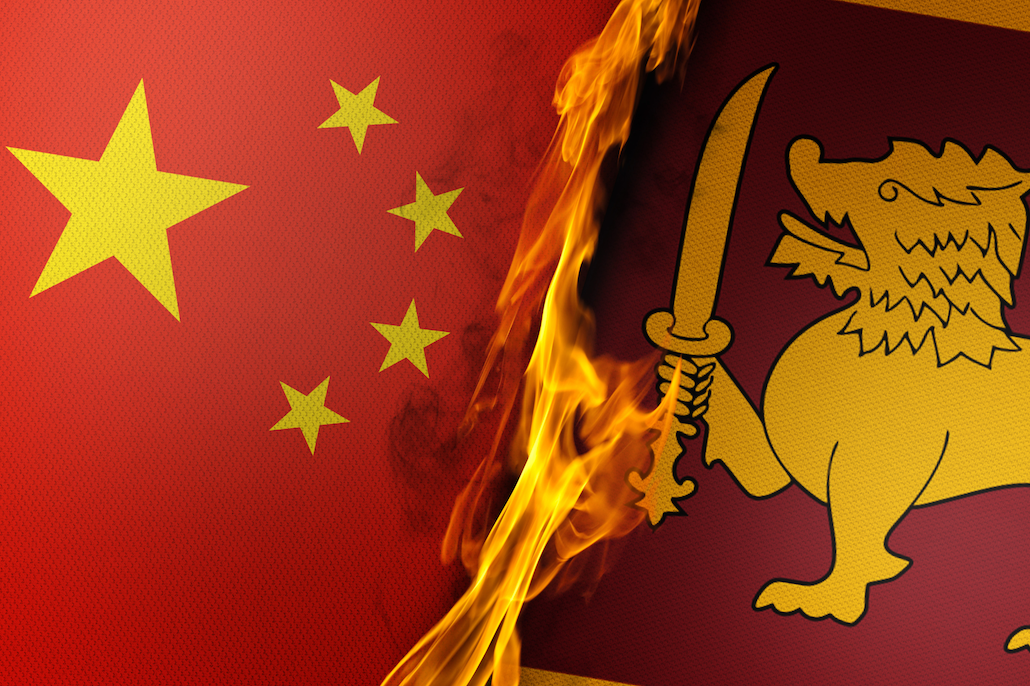
There has been a lot of talk recently about China’s foreign policy in Sri Lanka. Phrases like “taking over” and “recolonisation” have been thrown around. If you have heard of the Belt and Road Initiative, “debt-trap diplomacy”, or the current economic crisis in Sri Lanka, you might have heard that Sri Lanka is a victim of Chinese interference and debt trapping. Dept-trap diplomacy is widely discussed as the intentional offering of large loans to struggling nations, loans that the receiving country often can’t repay. When the receiving country inevitably defaults, it gives the lender leverage to demand concessions and influence in internal affairs. Sri Lanka is widely seen as the best example of this practice.
It has been argued that Sri Lanka’s 2017 sale of Hambantota International Port to a Chinese state-owned corporation on a 99-year lease is a clear example of debt-trap diplomacy. After 25 years of war and economic mismanagement, Sri Lanka took on large loans to fund the military, as well as subsequent development projects. Once the debt burden grew too much, Hambantota Port was sold in a debt-for-equity deal. Suddenly, the Chinese government had more-or-less permanent ownership of a port in another country, close to a major oil shipping route. This has created a lot of debate about whether this was an intentional Chinese strategy, or just a consequence of Sri Lankan government incompetence. But how accurate are either of these views?
Those who state that debt-trap diplomacy has been an intentional Chinese strategy in Sri Lanka and elsewhere point to two main factors. The first: that China offers loans with lax terms to countries that do not have the best track record of managing debt. Some have argued that Chinese loans are offered at higher interest rates than western or International Monetary Fund (IMF) loans, but with few other safety or regulatory conditions. This is made worse by Chinese government rejections of requests for the loans to be restructured once repayment became difficult (ISDP 2022; CSIS 2018). The second factor is that gaining influence in developing countries through funding infrastructure projects plays into China’s global ambitions to project power in the Asia-Pacific region. Chinese loans to Sri Lanka are seen as part of a larger geopolitical strategy, where loans have been accompanied by political and military aid for Sri Lanka, and funding to Rajapaksa’s political party. These incentives provide China with both soft and hard power, and leverage over Sri Lankan affairs. Policy makers in the west, especially in the US, have pushed this idea forward, pointing to Chinese lending practices both in Sri Lanka and countries throughout Africa.
Evidence against debt-trap diplomacy, particularly in Sri Lanka, makes for some very convincing arguments. The first is that the Hambantota Port’s construction was not initiated by China, but by the Rajapaksa government in Sri Lanka. Hambantota District is Mahinda Rajapaksa’s hometown; Hambantota port, and the construction of a major cricket stadium, international airport and other capital projects in or near Hambantota have been viewed as vanity projects by Rajapaksa as part of his attempts to elevate his home district’s profile. These projects have largely failed since their construction and have contributed to the country’s massive debt to China. The port is still unprofitable, and has capacity to hold significantly more shipping than what has arrived in recent years. While questions can be raised about why China would fund such unsustainable projects in the first place, they were nevertheless initiated by Sri Lanka.
Catch episodes of our latest podcast 'Identity'!
- Shakthi / Theatre, Intergenerational Trauma and Australian Tamil Identity
- Identity Podcast: Anuk/ Language, Grief and Tamil Community
- Maral/ Art, Belonging & Armenian-Iraqi-Canadian Identity
- Identity Podcast: Shuba/ Music, Feminism and Dual Identities
The second point of contention is that the port cannot be used for military purposes, according to Sri Lankan President Ranil Wickremesinghe. This would undoubtedly hamper any Chinese attempts to project military power through its investments in Sri Lanka.
Thirdly, it has also been argued that China didn’t “take over” the port, but bought it for $1.1 billion, giving the Sri Lankan government the cash it desperately needed to pay off other debts. Sri Lanka’s debt to China made up only 9% of Sri Lanka’s total external debts in 2016, considerably less than the country’s debts to western countries and financial institutions. This imbalance has also pushed many experts to argue that China’s takeover of the port was a consequence of Sri Lanka’s own economic mismanagement and corruption.
Despite a lot of evidence that the Hambantota sale was not a debt-trap, it has been argued that this one example cannot ignore the fact that using debt as a means of influence is a very clear Chinese strategy that has undeniably given China ownership of a very important asset, regardless of how predatory the process of acquiring the port was. Ameyaw-Brobbey (2018) has argued that there are potential implications for Sri Lanka’s internal security due to its heavy debt to China. While Hambantota Port’s construction was not initiated by China, many other infrastructure projects in Sri Lanka have been (CSIS 2018). It has also been pointed out that with China’s massive economic and military leverage over Sri Lanka, it would not be too difficult for the port’s non-military status to change over the course of the 99-year lease. Sri Lanka would be hard-pressed to refuse Chinese pressure to allow naval ships into the port if China brought such pressure forward.
So, is China using debt as a strategic trap to get military and economic concessions in Sri Lanka? Or is the idea of debt-trap diplomacy just a narrative pushed by nervous western governments and a result of Sri Lankan government incompetence? We have some 93 years left to see.
Sources
-
https://isdp.eu/sri-lankan-crisis-between-debt-trap-and-strategic-trap-the-chinese-stake/
-
https://www.state.gov/wp-content/uploads/2020/11/20-02832-Elements-of-China-Challenge-508.pdf
-
https://www.aidiaasia.org/research-article/will-hambantota-port-become-a-chinese-military-base
-
Meredith J. DeBoom (2019): Who is afraid of ‘debt-trap diplomacy’? Geopolitical narratives, agency and the multiscalar distribution of risk, Area Development and Policy.
-
https://internationalfinance.com/did-chinas-debt-trap-destroy-sri-lankan-economy/
-
https://www.csis.org/analysis/game-loans-how-china-bought-hambantota
-
https://www.chathamhouse.org/2020/08/debunking-myth-debt-trap-diplomacy/4-sri-lanka-and-bri
-
Ameyaw-Brobbey, T. (2018). The Belt and Road Initiative:Debt Trap and its Implication on International Security. Asian Journal of Multidisciplinary Studies Vol. 1 (2). 73-81.
-
Deborah Brautigam (2019): A critical look at Chinese ‘debt-trap diplomacy’: the rise of a meme, Area Development and Policy, DOI: 10.1080/23792949.2019.1689828
READ NEXT:
- myTamilDate Success: Agi’s First Attempt With Online Dating Led Her To Soulmate Ano
- myTamilDate.com Love Story: Suji & Sinthu Lived 15 Minutes Apart For Years And Never Met Until Joining MTD
- How France Met Canada: A MyTamilDate.com Love Story
- myTamilDate.com Love Story: Tharshi & Ravi Found Love During Lockdown

























